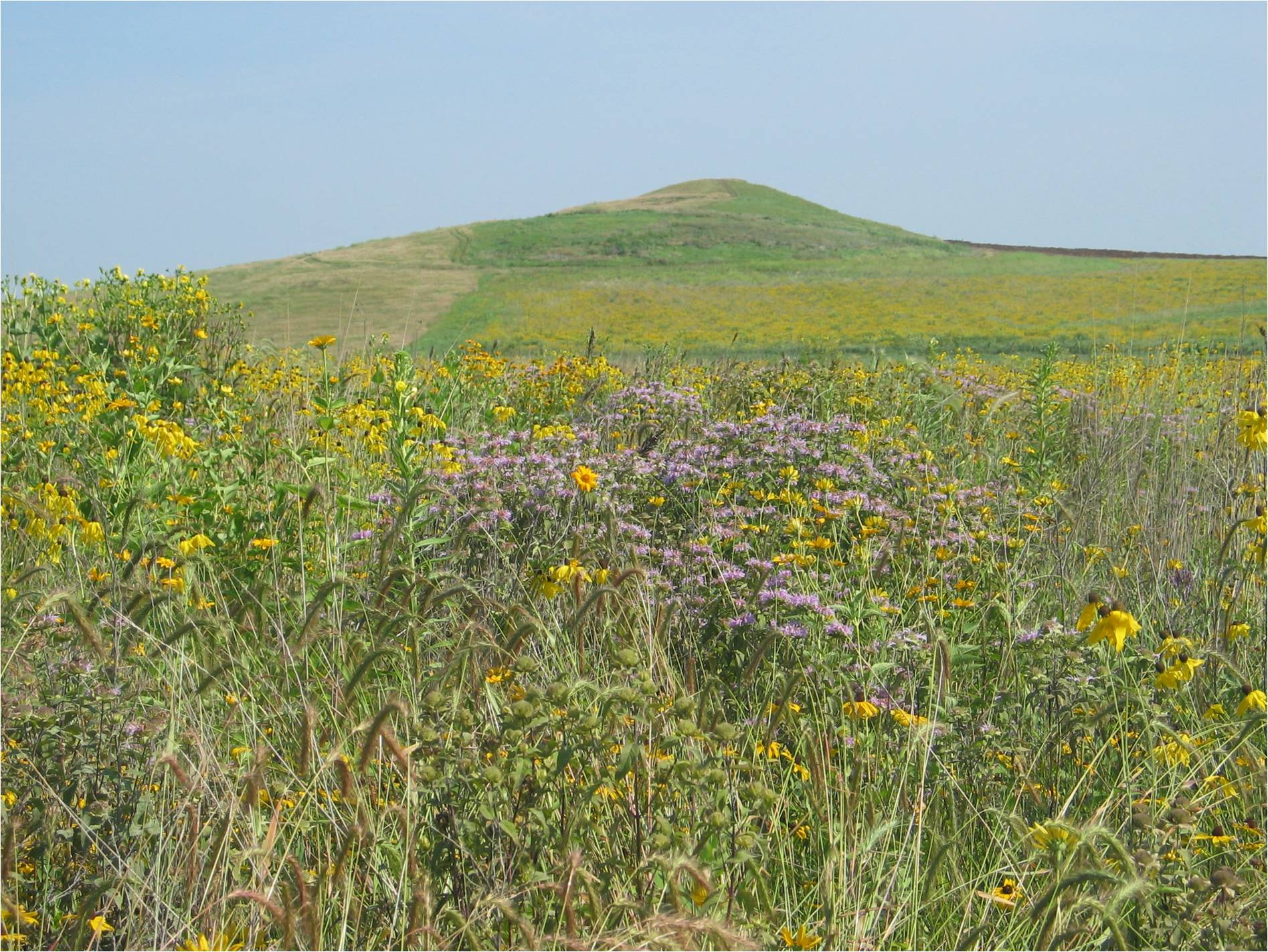Prairie Restoration at Spirit Mound
Spirit Mound, near Vermillion, SD, is a historically significant site because it is one of the few locations that was clearly described by Lewis and Clark on their voyage across the country in 1804. Spirit Mound was historically tallgrass prairie, but like most of this region, it was converted into agricultural production in the mid-19th century. Recognizing the historical significance of Spirit Mound, the State of South Dakota purchased the site in 2001 and began restoring prairie throughout the 320-acre site. In 2003-2004, an initial site assessment, including a vegetation survey and mapping of soil characteristics, was completed (Vote 2004), but there has been no systematic site assessment since 2004.
This research will re-evaluate the plant community composition more than 10 years after the site was restored to prairie, including an evaluation of the success of native prairie plant establishment versus non-native and invasive species. This research will also focus on the former cropland at the site, which is comprises more than 70% of the restored prairie at Spirit Mound. Prescribed fire has been used as the main form of management/disturbance at the site, which is a commonly used and recommended form of prairie management (Packard and Mutel 2005). We will examine how the burn interval after restoration affects the plant community composition, and this information can be used to inform future burn regime planning decisions at Spirit Mound and other restored prairies.

